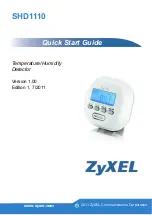
3Com Switch 8800 Configuration Guide
Chapter 35 MPLS Architecture
35-2
35.2.2 Label
I. Label definition
A label is a locally significant short identifier with fixed length, which is used to identify a
FEC. When reaching at MPLS network ingress, packets are divided into different FECs,
based on their FECs, different labels are encapsulated into the packets. Later
forwarding is based on these labels.
II. Label structure
The structure of the label is shown in Figure 35-1.
Label
Exp
S
TTL
Figure 35-1
Label structure
Label is located between the link layer header and the network layer packet, with the
length of four bytes. A label contains four fields:
Label: label value, 20 bits.
Exp: three bits, reserved, used for COS.
S: one bit, MPLS supports hierarchical label structure, namely multi-layer label. Value 1
refers to the label of bottom layer.
TTL: eight bits, with the same meaning as TTL in IP packet.
III. Label operations
1) Label
mapping
There are two types of label mapping: label mapping at ingress routers, and label
mapping in MPLS domain.
The first type of mapping is implemented at ingress label switching routers (LSR). The
ingress LSRs group the incoming packets into multiple FECs based on certain
principles, and then map corresponding labels to these FECs and record the mapping
results into the label information base (LIB). In simple words, label mapping is to assign
a label to a FEC.
The second type is also called incoming label mapping (ILM), that is, to map each input
label to a series of next hop label forwarding entries (NHLFE). The packets are
forwarded along the paths based on the mapping results.
2) Label
encapsulation
Figure 35-2 illustrates label encapsulation in different media:
















































